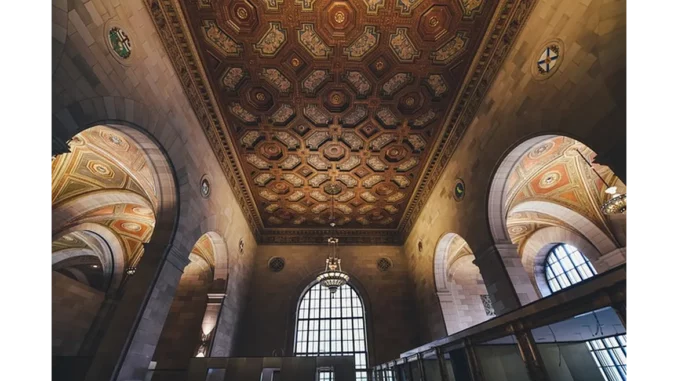
Exploring Diverse Career Paths in Interior Design: Opportunities Beyond the Ordinary
When one imagines the realm of interior design, visions of chic homes and opulent hotel lobbies often come to mind. However, the principles of interior design extend far beyond these conventional spaces, offering a multitude of exciting and varied career opportunities. Whether you’re an aspiring designer or a seasoned professional looking to diversify, the following career paths illustrate the expansive possibilities within this dynamic field.
1. Residential Interior Design
For many, a career in residential interior design serves as the quintessential starting point. This sector encompasses the design of houses, condominiums, apartments, and even tiny homes. Residential interior designers possess the expertise to transform a room—or an entire home—into a stylish haven that mirrors the owner’s personality and meets their functional needs. These professionals must also be well-versed in fire and health regulations, building codes, and safety standards to safeguard residents’ well-being and property.
Expert Insight:
“Understanding a client’s lifestyle and preferences is crucial in residential design. It’s about creating a space that feels uniquely theirs,” says Jane Doe, a renowned residential designer.
2. Commercial Interior Design
Commercial interior design is an expansive field where designers craft environments that reflect a company’s brand and operational needs. This sector encapsulates any space where business activities take place, ranging from salons and gyms to hotels, casinos, retail stores, movie theatres, airports, and restaurants.
Sensory Experience:
Imagine walking into a high-end boutique where the lighting accentuates the luxurious fabrics and the layout invites exploration. The ambiance is meticulously crafted to enhance the shopping experience, a testament to the designer’s skill.
3. Interior Design Home Stager
In the competitive real estate market, home stagers play a pivotal role in helping sellers and realtors stand out. These professionals transform empty or occupied homes into enticing, temporary living spaces that allow prospective buyers to envisage their future lives there. Home stagers often guide clients in decluttering, rearranging furniture, and optimising space for viewings.
Practical Tip:
“Less is more when staging a home. Neutral colours and minimalistic decor can make a space feel larger and more inviting,” advises John Smith, a leading home staging expert.
4. Set Design for Theatre, TV, and Film
For those enamoured with the world of entertainment, set design offers a unique avenue to bring stories to life. Set designers are integral to the success of theatrical productions, television shows, and films, as they create environments that encapsulate the director’s vision, style, tone, and period authenticity. This often involves extensive research to ensure accuracy and coherence.
Expert Insight:
“A well-designed set can transport the audience to another world, making the narrative more believable and engaging,” says Sarah Brown, an acclaimed set designer.
5. Lighting Design
The art and science of lighting design can dramatically alter the perception and functionality of any space. This highly technical field demands a deep understanding of physics, optics, lighting technology, colour theory, and building codes. Lighting designers work across various settings, from residential and commercial spaces to theatres, museums, and music venues, creating atmospheres that enhance both aesthetic appeal and usability.
Sensory Experience:
Imagine a gallery where strategically placed lights highlight the intricate details of each artwork, drawing visitors into an immersive visual journey.
6. Exhibit Design
Exhibit designers are masters at transforming complex information into engaging physical experiences. They create bespoke displays for galleries, museums, festivals, libraries, convention centres, and private businesses, ensuring that each exhibit is both informative and visually captivating.
Practical Tip:
“Interactive elements can significantly enhance visitor engagement, making the exhibit both educational and memorable,” suggests Emily White, a prominent exhibit designer.
7. Sustainable Design
Sustainable design marries beauty with eco-conscious principles, focusing on creating spaces that are both aesthetically pleasing and environmentally responsible. This approach involves using materials that are ethically sourced and harvested, improving energy efficiency, and incorporating vintage, reclaimed, or recycled items to minimise environmental impact.
Expert Insight:
“Sustainability isn’t just a trend; it’s a necessity. By choosing eco-friendly materials and practices, we contribute to a healthier planet and create spaces that are timeless,” asserts Michael Green, a sustainable design advocate.
8. Yacht and Boat Interior Design
Designing for yachts and boats presents unique challenges due to the limited space and the need for practical, yet luxurious, solutions. Professionals in this niche must balance decorative elements with functionality, ensuring that every design choice serves a dual purpose in the confined quarters of a seafaring vessel.
Sensory Experience:
Picture a sleek yacht interior where every nook is utilised efficiently, blending opulent materials with smart storage solutions to create a harmonious and functional space.
9. Educational Facilities Interior Design
Educational facilities require designs that accommodate a wide range of activities and cater to large numbers of students daily. This speciality involves creating functional and inspiring environments in classrooms, libraries, laboratories, cafeterias, and dormitories, all designed to enhance the learning experience.
Practical Tip:
“Flexible spaces that can adapt to different teaching methods and activities are essential in modern educational design,” notes Lisa Roberts, an expert in educational facility design.
The world of interior design is vast and full of opportunities. Whether you’re just starting out or seeking to specialise, there’s a niche that can benefit from your unique skills and creativity. Each career path offers a chance to make a tangible difference, transforming spaces in ways that are both functional and inspiring.


Be the first to comment